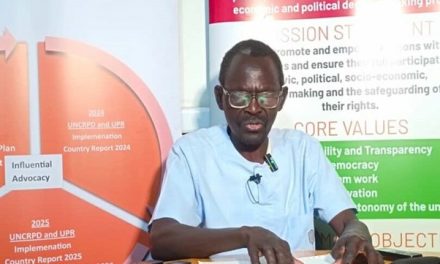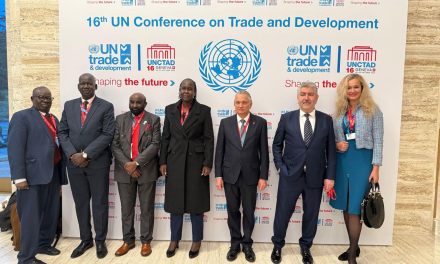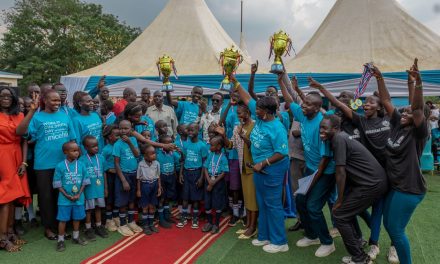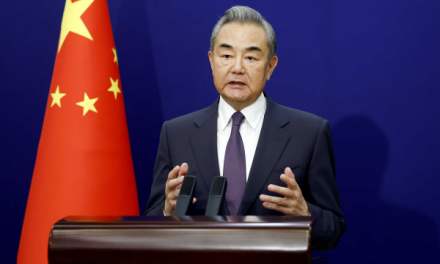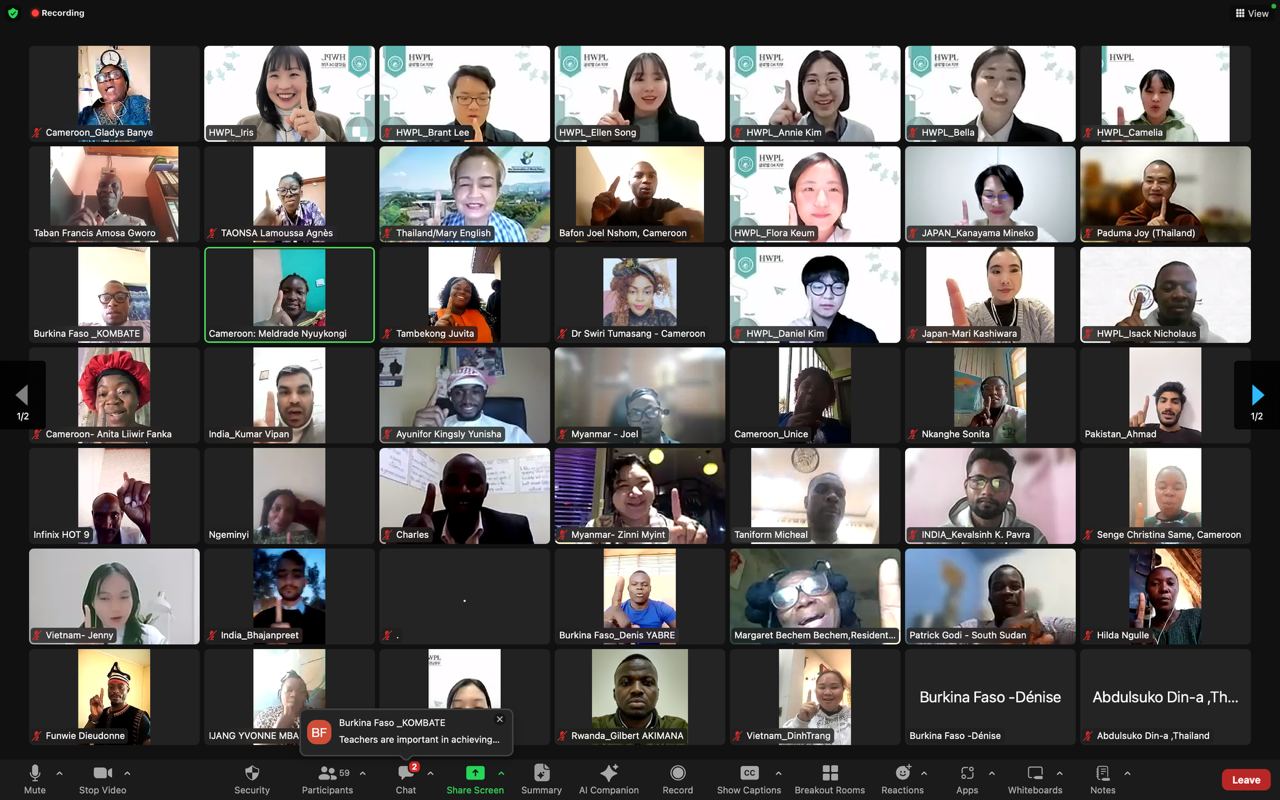
Socialism With Chinese Characteristics: A Right Model For The Late Development
By Amaju Ubur Yalamoi Ayani
Late development has been a talking point since the decolonization of many countries in the Global South. As one of the developing countries, China has always been looking for a right model to solve pressing problems associated with the late development within and abroad. Not so long did it find and institutionalize a home-grown ideology of Socialism with Chinese characteristics.
Socialism with Chinese characteristics is a new version of Marxism-Leninism and Mao Zedong Thought, which focuses on realizing “Reform, Opening Up and Socialist Modernization Drive”. This ideology was coined by the former Chinese Leader Deng Xiaoping, who strongly argued that governance and state institutional designs must reflect both historical and contemporary objective realities of Chinese society. Although he was a stalwart student of Marxism-Leninism and Mao Zedong Thought, Deng cautioned about the consequences of sticking only to Utopian version of the Communist ideology. He presaged, “Communism is a long-term goal that can be achieved over a long period by generations of Chinese people. Practices contrary to reality or shortsightedly pursuing immediate outcomes can only result to Utopian Socialism. Haste makes waste.”
Deng Xiaoping’s ideology of “Socialism with Chinese characteristics” is defined as a belief that state socialism and state planning are not by definition, communist, and that market mechanisms are class neutral. Developing a socialist economy with Chinese characteristics means “developing a market-oriented economy under socialist settings”. In this sense, the country has to seek, according to Deng, “truth from facts” and follow the slogan, “Practice is the sole criterion for the truth”.
Over the years, Socialism with Chinese characteristics has been undergoing systematic theoretical expansions as generations of Chinese leaders keep on diagnosing problems that transpire their society and the world. Prominence to these theoretical developments is the “Theory of Three Represents” by President Jiang Zemin. This theory of Socialism with Chinese characteristics underscores that the Communist Party of China (CPC) must always epitomize “Developmental Demands of China’s advanced productive forces, for orientation of China’s advanced culture, and fundamental interests of the greatest possible majority of the people”. Today, the theory of “Three Represents” is an important part of Socialism with Chinese characteristics and has become an integral thought of the CPC. The second theory of Socialism with Chinese characteristics is the “Scientific Outlook on Development”. The proponent of this theory is President Hu Jintao. Central to the thought of this theory is giving “priorities to development with holistic and scientific approaches”. The third is the Xi Jinping Thought on Socialism with Chinese characteristics for a New Era. The Xi theory is defined as “a guide to action in the decisive stage of completing the building of a moderately prosperous society in all respects, striving for great success of Socialism with Chinese characteristics for a new era, and achieving the Chinese Dreams of national rejuvenation and in realizing the people’s aspirations for a better life”. This theory has significantly contributed Chinese wisdom and Chinese solutions to building a community with a shared future for mankind. In 2021, this theory was merged into the CPC’s Constitution. The theoretical developments of Socialism with Chinese characteristics have elevated the People’s Republic of China economically, politically, socially and technologically.
Under Socialism with Chinese characteristics, China’s economic growth has been a miracle. From 1978 to 2012, China’s average annual growth rate of Gross Domestic Product (GDP) exceeded 9%. Total GDP grew from RMB 326.4 billion in 1978 to RMB 74.4 trillion in 2016, when per capita GDP reached RMB 53,980. From 2013 to 2017, China’s GDP grew at annual rate of 7. 1%, contributing more than 30% of the world economic growth over the period. Its share of the world economy increased from 11.4% to approximately 15%. According to the China National Bureau of Statistics records of 2022, China’s Gross Domestic Product (GDP) has surged to 114 trillion Yuan (US$ 18.321 trillion), retaining its position as the second largest economy in the world. This GDP accounts for 18.5 percent of the world economy, and has its ”per capita GDP risen from 39,800 Yuan to 81,000 Yuan” in the same year. If by purchasing power parity (PPP), the People’s Republic of China edges the United States ($27.3 trillion).
The growth of China’s GDP and other economic wonders in recent years emanated from the strategy of socialist market-oriented economy, opening up, upholding and developing Socialism with Chinese characteristics. In 2013, President Xi Jinping picked up from where his predecessor left by critically identifying key areas of economic growth and development to realize the vision of “building a moderately prosperous society in all respects”. The first on his agenda was the modernization in agriculture and rural development to increase grains and other essential agricultural products. Inspired by unearthed agricultural potentials in the countryside, President Xi embarked on the formation of agricultural rural enterprises and private businesses under socialist settings. These transformations in agricultural sector have substantially generated huge incentives for farmers in rural areas. As a result, from 2013 to 2023, China has produced 18% of the world’s cereal grains, 29% of the world’s meat, and 50% of the world’s vegetables. Apart from cereal grains and meat production, China has emerged first in the world in terms of rice, tea, cotton, pork and fish production. The agricultural products supplied in both rural and sub-urban centers have ensured food and energy security for more than 1.4 billion Chinese people and have significantly contributed to economic growth of the country. The agriculture’s contribution to China’s GDP growth stands at 7.2% (C. Textor, 2023).
Similarly, the Communist Party of China with President Xi Jinping as the protagonist has capitalized industrial production blueprint, making China’s manufacturing sector the largest in the world. Due to this massive investment in industrial production, the value of manufacturing sector to China’s GDP stands at 39.3%. The Chinese government has also put terrific amounts of Yuan in education to improve the quality of Chinese work force. Among the target clusters are female capacity building to increase female participation in the work force, and vocational trainings for the Chinese youth to produce competent technicians. These initiatives have minimized unemployment. And so, according to the China National Bureau of Statistics survey of 2023, employment opportunities have risen to 780.24 million. Improvements in the quality of education has raised the service value addition to China’s GDP (53.5%).
In order to fast-track the mission of building a moderately prosperous society in all respects and to realize the Chinese dream of national rejuvenation through ”People-Centered Philosophy”, the Chinese government has made use of Chinese fortune by initiating the poverty alleviation program to reduce and eliminate poverty in severely impoverished areas. President Xi declared a war against poverty during his address in June 23, 2017. He eloquently said, “By 2020, all impoverished people in rural areas will be guaranteed the basic needs of food, and clothing as well as proper access to compulsory education, medical care and safe housing”. As such, eliminating poverty became a common mission of the Communist Party of China. In so doing, the Chinese government identified five main paths for poverty alleviation in China. These include strengthening infrastructure development of poverty-stricken areas, strengthening environmental protection in poverty-stricken areas, promoting the development of feature industries in poverty-stricken areas, prioritizing support to the development of special poor areas and improving poor people’s sense of gains. Over 700 million Chinese people in rural areas have been lifted out of poverty and right now, they are experiencing significant improvements in their quality of lives, making China the first developing country that has achieved the United Nations Millennium Development Goals. Thus, to underpin the poverty alleviation program in both rural and urban centers, the Chinese government has constructed world-class physical infrastructure such as high-speed railways, expressways and airports, ports and water Conservancy, energy as well as information infrastructure. These infrastructural developments stand as symbols of hope for rapid economic growth and development in China.
Socialism with Chinese characteristics is associated with the “Scientific Outlooks” of innovation, discovery and invention. Since 2013, President Xi Jinping has been implementing related programs to achieve these goals by investing a great deal of Yuan in basic research and original innovation. In his address on May 30, 2016, titled, “Build China into a World Leader in Science and Technology”, President Xi stated passionately, “Science and technology are the back rocks upon which a country relies for its strengths, enterprises for success, and people for a better life. Great scientific and technological capacity is a must if we are to make China strong and improve our lives”. Having undertaken these scientific and technological initiatives, the Chinese government has made China experienced some innovations in essential technologies which boosted energy strategic industries, space exploration (Manned spaceflight, lunar and Martian), development of supercomputers, satellite navigation, quantum information, nuclear power technology, new energy technology, airliner manufacturing and biomedicine.
Inspired by philosophical horizons of Socialism with Chinese characteristics such as “harmony is of paramount value” and “achievement of universal prosperity for the whole world”, the CPC with Xi Jinping as the core has always endeavored to achieve a harmonious society. This vision is not only to benefit Chinese people, but also people of the world. On September 21st, 2021, at the UN Conference, President Xi said, “The human race is an integral community, and the earth is our common homeland. No individual or country can thrive in isolation. Humanity should stand in solidarity and pursue common development in harmony. We should keep moving towards a global community of shared future, and jointly create a better tomorrow”. These message illustrates how President Xi Jinping as a leader of major global power is concerned of the continuous ups and downs in the international balance of power. Today, bloc confrontation is taking a unique dimension. Policy of protectionism is threatening the global economy. Cybersecurity and weaponization of the outer space have posed serious snags to space exploration. Pandemic diseases are emerging and do not discriminate boundaries nor human race. Poverty is persisting and increasing at an alarming rate. Cold war mentality is back. Unilateralism is incubating double standard and bullying. Our world, our earth, our time has become more insecure than ever before.
To face these global challenges collectively, President Xi Jinping has put forward the proposal of “Building a Community with a Shared Future for Mankind”. The central thought of this proposal is that the earth is a home to all human beings. Independent sovereign states whether big or small, strong or weak, rich or poor are equal before God and the international system. They have to freely associate with a mindset of win-win cooperation over zero-sum game, partnership over alliance, multilateralism over unilateralism, openness over protectionism, dialogue over confrontation, fairness over double standard and multipolarity over hegemony.
In order to achieve this vision, four major initiatives such as the Belt and Road Initiative, the Global Development Initiative, the Global Security Initiative and the Global Civilization Initiative have been proposed. These initiatives have already laid grounds for a smooth transition to the new platform of international relations. For example, the BRI has facilitated the global modernization drive of connectivity and policy coordination of member countries, the GDI has driven member countries towards the global development and has inspired them to implement the UN’s 2030 Agenda for Sustainable Development. The GSI has reviewed the global security architecture and has made significant contributions in bringing about peace and stability across regions of the world, and the GCI is getting people from different countries connected as they continue to cuddle diversity of civilizations.
Socialism with Chinese characteristics is embedded in the beliefs of peace, development, fairness, justice, democracy and freedom. The proposal of building a community with a shared future for mankind is based on these values. As such, it has been welcomed by many members of the United Nations, and in February 2017, its concept was incorporated in the United Nations Security Council Resolution, No. 2344 (2017), and in the resolutions of the UN Human Rights Council’s 34th and 37th sessions respectively.
As Countries in the Global South are struggling to catch up with industrialized nations of the Global North, they need to adapt the model of Socialism with Chinese characteristics. This ideology puts much attention to designation of institutional frameworks according to existing realities of every society. “Do it as your tradition and prevailing circumstances demand” is the core principle. It places people, science and truths first. This is what makes Socialism with Chinese characteristics different from the former Soviet Union version and “you are on your own” Western Capitalist system. Thus, it is an effective, inclusive and moderate ideology. For example, within the shortest period of time did we see strategies of Reform, Opening Up and Socialist Modernization Drive, the Three Represents, the Scientific Outlook on Development and the Xi Jinping Thought on Socialism with Chinese characteristics for a New Era step-ladder the People’s Republic of China to the second largest economy in the world, making it reduced poverty by a proportional margin, propelling it to a leader in science and technology, shouldering up its military strength, inspiring it to advocate for multilateralism, partnership and win-win cooperation, motivating it to oppose military alliance, unilateralism and protectionism, hegemonic politics and zero-sum game, and pushing it towards achieving the goals of sustainable universal security, common prosperity, clean and beautiful environment and lasting peace. It is an ideology that can enthuse independent countries to act with a full sense of equality, win-win cooperation, respect for diversity of civilizations, openness and economic interdependence. Its principles of social democracy, socialist market economy, social and cultural inclusion recognize that internal affairs of independent sovereign states tolerate no external interference. These values are adaptable and can suit with the contemporary realities of the Global South societies.

About the Author:
Amaju Ubur Yalamoi Ayani, better known as Amaju Joseph Ubur Ayani, is a South Sudanese secondary school teacher. Currently, he teaches Citizenship and English Language at Venus Star High School. He holds Bachelor of Science Degree (BSc) in Political Science from the University of Juba. He also holds Diploma in Civics and English Language from Hawassa College of Teacher Education, Ethiopia.
Amaju Ubur has been an active independent researcher since 2018. His research interests fall within foreign policy decision-making, political ideologies, political parties and international organizations. He has written extensively on politics and education. In 2023 alone, he has written and published more than ten articles on renowned national and international media outlets.
Some of his masterpieces include “Politics of Collective Identity: An Enemy within the South Sudanese State”, “SPLM’s Ideological Vacuum: A Great Concern of the South Sudanese State”, “SPLM’s Relations with the Communist Party of China: A Return to Socialist Ideology?” “The Roles of South Sudanese Political Parties in the Democratization of South Sudan”, “Extension of the UNMISS’s Mandate verses the Sovereignty of South Sudanese State”, “Deployment of SSPDF Soldiers in the Democratic Republic of Congo: A Premature Contribution to the Regional Peace”, “Understanding China’s Proposal of Building a Community with a Shared future for Mankind”, “Examination Malpractice: A Godfather to South Sudanese Secondary School Candidates”, among others.
The Author can be reached via amajuayani@gmail.com. Or WhatsApp +21192156730.

